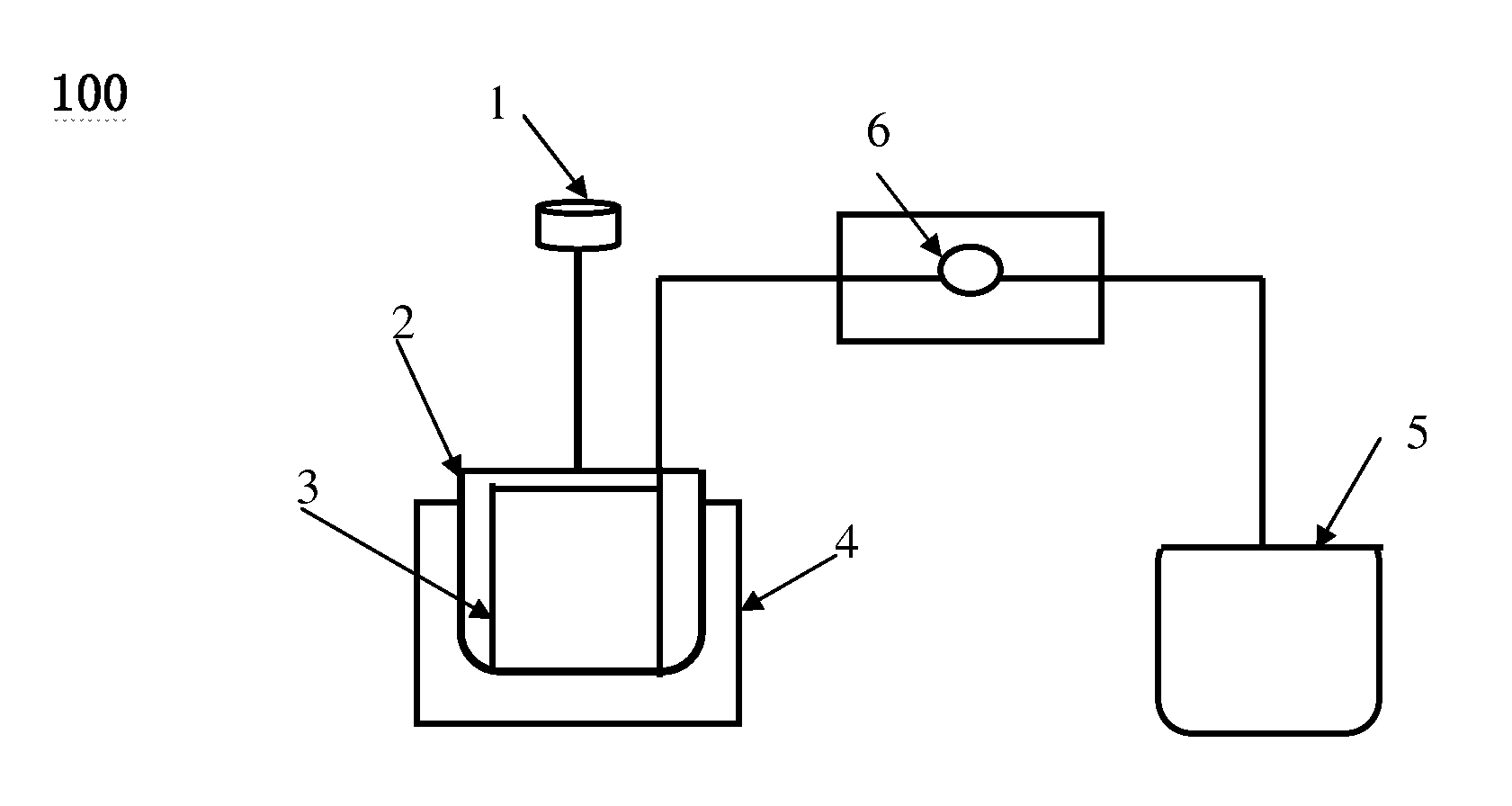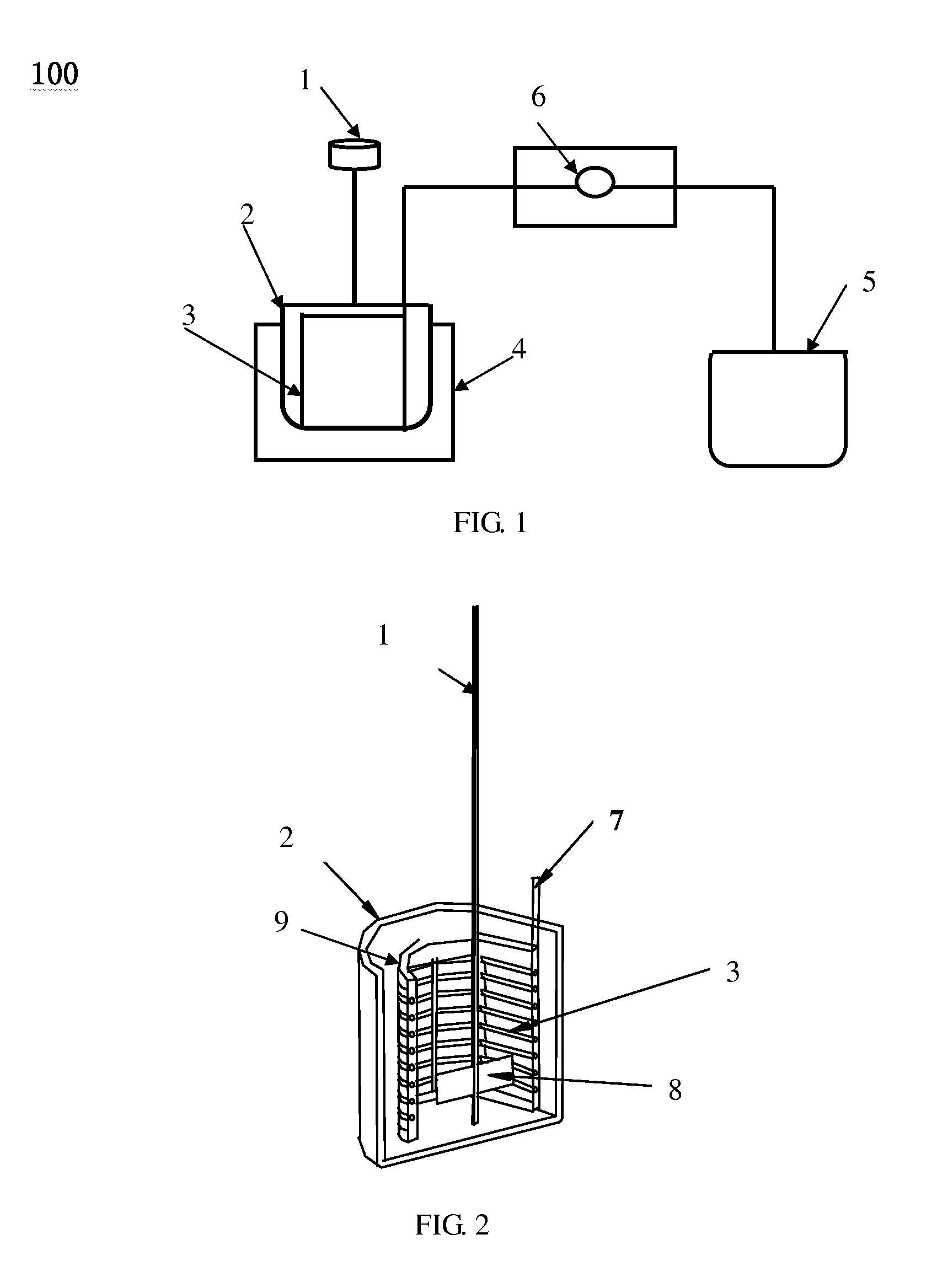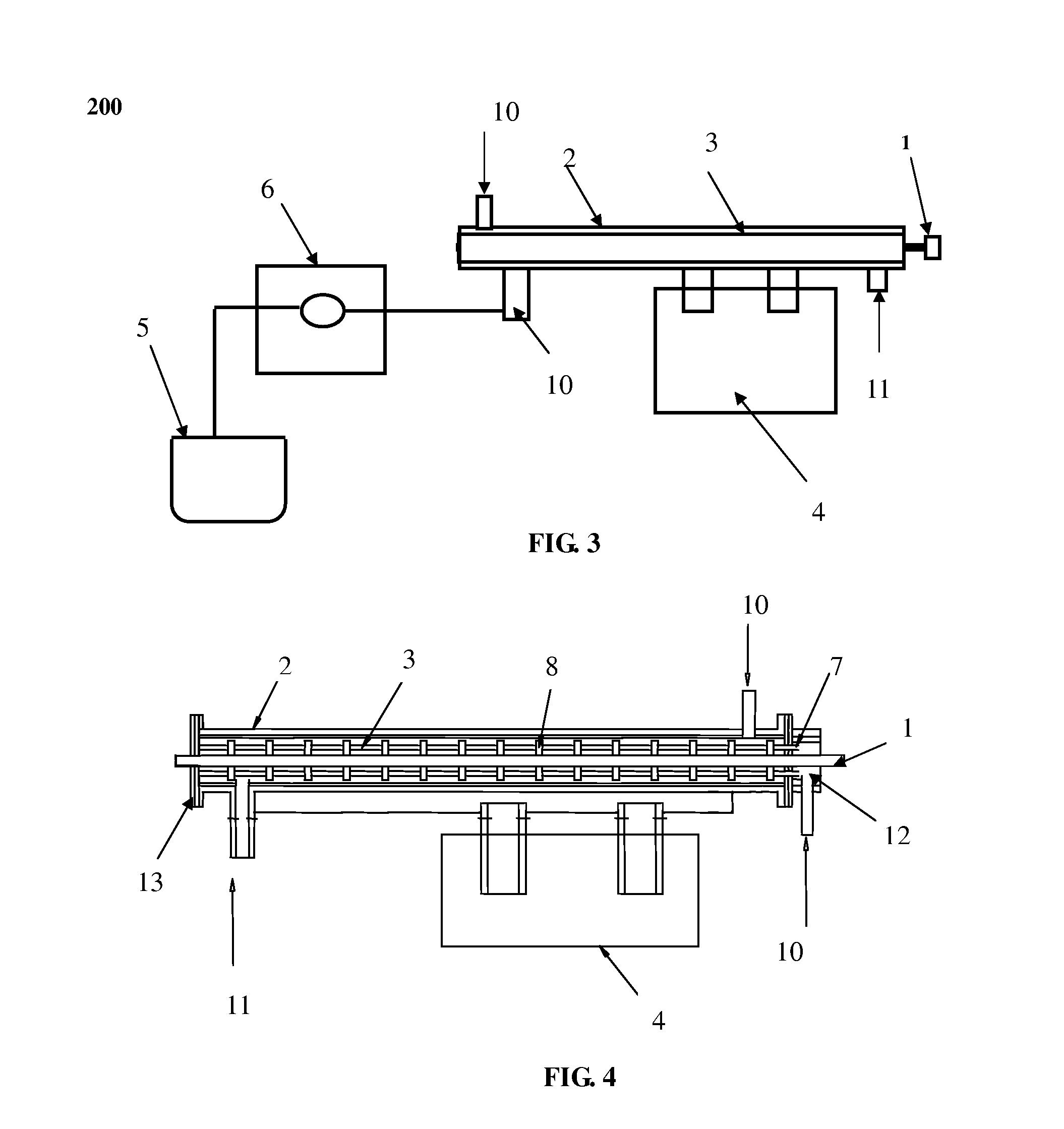Apparatus and process for metal oxides and metal nanoparticles synthesis
a technology of metal oxides and metal nanoparticles, applied in mechanical vibration separation, membranes, transportation and packaging, etc., can solve the problems of large nanoparticle size distribution, lack of precise control, and high equipment cos
- Summary
- Abstract
- Description
- Claims
- Application Information
AI Technical Summary
Benefits of technology
Problems solved by technology
Method used
Image
Examples
example 1
[0050]In this experiment, 51.2 g of Ce(NO3)3.6H2O and 14.6 g of ZrONO4 were dissolved in 300 ml distilled water and transferred into the batch reactor 2. The batch reactor 2 was dipped in an ultrasonic generator 4 at frequency of 60 KHz and temperature of 60° C. The rotate speed of the stirrer 1 is 100 r / min. A desired amount of NH4OH solution was injected into the lumens of membrane micro-tube unit 3 at a constant rate of 0.2 ml / min by a measuring pump 6 and then diffused into the mixture solution of Ce(NO3)3.6H2O and ZrONO4 via the micro-holes on the wall of membrane micro-tube unit 3 until the pH=10 of the solution in the batch reactor 2. The precipitation of metal oxide precursor (hydroxid) occurred, yielding a buff color precipitate. The precipitate was filtered, washed with distilled water, and dried in air at 110° C. for 10 hours, and then calcinated at 550° C. for 4 hours, giving the products of Ce0.6Zr0.4O2 nanoparticles with particle size of 10 nm and specific surface area...
example 2
[0051]In this experiment, 0.16 g of AgNO3 and 60 g of Polyvinyl Pyrrolidone (PVP, molecular weight is 30000) were dissolved in 300 ml distilled water and transferred into the batch reactor 2. 0.53 g of NaBH4 was dissolved in 30 ml distilled water and transferred into the container 5. The batch reactor 2 was dipped in an ultrasonic bath 4 at frequency of 120 KHz and the temperature of 60° C. At same time, NaBH4 solution was injected into the lumens of membrane micro-tube unit 3 at a constant rate of 1.2 ml / min by a measuring pump 6 and then diffused into the mixture solution of AgNO3 and PVP via the micro-holes on the wall of membrane micro-tube unit 3. The rotate speed of the stirrer 1 is 200 r / min. The Ag nanoparticles with size of 5-8 nm (FIG. 11) were produced with uniform size distribution, which is smaller than that produced by common chemical reduction of AgNO3 (FIG. 12)
example 3
[0052]In this experiment, 0.836 g of HAuCl4 and 24 g of Polyvinyl Pyrrolidone (PVP, molecular weight is 30000) were dissolved in 500 ml distilled water, and then transferred into the batch reactor 2. 1.16 g of NaBH4 was dissolved in 50 ml distilled water and transferred into the container 5. The batch reactor 2 was dipped in an ultrasonic generator (100 KHz) 4 at the temperature of 50° C. At same time, NaBH4 solution was injected into the lumens of membrane micro-tube unit 3 at a constant rate of 1 ml / min by a measuring pump 6 and then diffused into the mixture solution of AgNO3 and PVP via the micro-holes on the wall of membrane micro-tube unit 3, resulting the Au3+ reduction occurred. The rotate speed of the stirrer 1 is 150 r / min. In the end of this process, the color of the solution turned to be wine-reddish color, giving the Au nanoparticles with quite narrow uniform size distribution. The average size of Au nanoparticles was 3.5 nm (FIG. 13).
PUM
| Property | Measurement | Unit |
|---|---|---|
| size | aaaaa | aaaaa |
| micro-hole diameter | aaaaa | aaaaa |
| micro-hole diameter | aaaaa | aaaaa |
Abstract
Description
Claims
Application Information
 Login to View More
Login to View More - R&D
- Intellectual Property
- Life Sciences
- Materials
- Tech Scout
- Unparalleled Data Quality
- Higher Quality Content
- 60% Fewer Hallucinations
Browse by: Latest US Patents, China's latest patents, Technical Efficacy Thesaurus, Application Domain, Technology Topic, Popular Technical Reports.
© 2025 PatSnap. All rights reserved.Legal|Privacy policy|Modern Slavery Act Transparency Statement|Sitemap|About US| Contact US: help@patsnap.com



